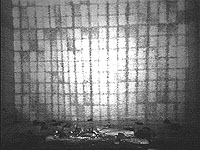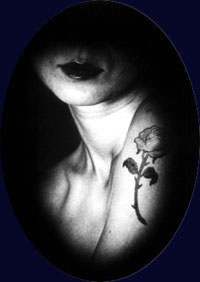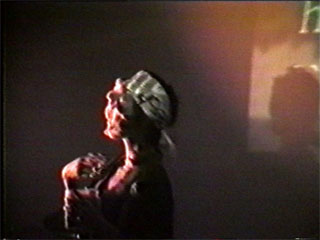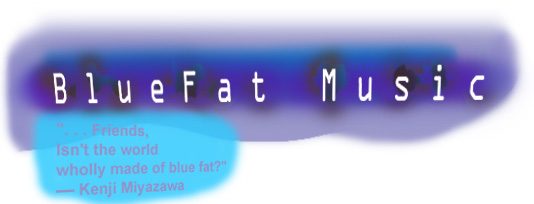

"By using propaganda and anti-propaganda," Rika Ohara says, "I'm trying to comment on the current expectations of the arts to be utilitarian and therefore be propaganda." Her Tokyo Rose is decidedly nonutilitarian, doing what good art does best: the piece evokes responses within the viewer that aren't easily defined; the audience is allowed to draw its own conclusions, to walk away with a head full of images that may or may not add up to concrete conclusions. More likely, what the audience takes from Ohara's work are questions of our susceptibility to media and government information and disinformation -- for instance, why do we believe there was one evil Tokyo Rose, when in fact, the myth was made up of at least six different radio propagandists? -- along with the vivid imagery Ohara provides with video and slide projections, text, movement and sound, specifically John Payne's evocative music. Ohara notes that the work is "more about contemporary issues if you think of the ghost of Tokyo Rose as an entity coming back to comment on the current warlike relationship between the U.S. and Japan," in reference to trade. The piece is lovely and strong, with transcendent moments in which one doesn't think at all -- it's enough just to take in the performer in front of, perhaps, a huge ship moving through the waves.
-- Connie Monaghan, the L.A. Weekly, August 19 - 25, 1994
For European eyes, the depth of the break between Japan and the U.S. seems strange. Iy feeds on the experience of the humiliating defeat of Japan and from the resulting treatment of the Japanese as losers, specifically for the Japanese people living in the U.S.A.
In her performance Ohara doesn't play the role of Tokyo Rose, but is working from the return of the "Ghost of Tokyo Rose" with a collage of dance scenes, documentary film material, text passage and music. She projects historical facts -- such as the number of rapes of Japanese women by American GIs within a few days in September 1945 -- onto a graciously moving Japanese singer.
But Ohara does not only work in defense. One of the strangest parts of the video is the scene showing her as a cross between a geisha and Mother of God in Pieta position bowing over a lying American man. Her siffly angled hands are caressing the man's body yet without touching him. To meet one another ultimately doesn't seem possible. What she formulates in a more codified way in her performance, Ohara expresses more clealy in her journalistic contributions. Radically, she is criticizing the pseudo-tolerant culture politics of L.A. and points at the danger of multi-racism behind the expression "Multiculturalism."
With her art Ohara is moving in the periphery of works gathered under the catchphrase "politically correct." Although her work is full of political content and shows her poisitions, she is defending herself against such a classification in a certain direction. She doesn't want to carry the label of political correctness, with its one-sense meaning. Hers is an unbroken conviction about the autonomy of art.
-- Nicola Kuhn, from exhibition catalog Vorort International, translated by Susken Rosenthal

As the projections change, the bars gain definition. The music rises in pitch and volume until it becomes cacophonous. Ohara's graceful, balletic movements provide an elusive calm amidst the visual entrappment and aural turmoil. A monotonous male voice is heard, barely intelligible above the din. "Here lies a race called man," it drones.
Intended as a treatise against nuclear destruction, Shelter eloquently states its case. This hauntingly repetitive piece effectively portrays the relentless, recurring devastation of a man-made apocalypse. Ohara has trained extensively in the visual and performing arts, blending a variety of different media to render an atmosphere charged with oppressive chaos.
-- Alison Sloane, the Los Angeles Reader, October 27, 1989
Ohara's Shelter Phase II was a minimalist solo set in a post-apocalyptic wasteland. Slide projections covered the back wall with steel gray graph patterns and reddish blotches that reminded one of diseased human cells. A prerecorded voice read from Yukio Mishima's "An Epitaph for Man." Ominous moans, rattles and breathy, wooden flute tones filled the air. And all the while, Ohara did little more than lie motioneless on the floor and beat a diagonal path toward a dim light.
It was a long piece that drew you in gradually. By the end, you shared Ohara's hopelessness at the mercy of this bleak environment.
Less successful but equally ambitious was . . .
-- Jody Leader, Daily News, April 30, 1990

Only the last piece had enough wit or subtlety to raise it out of the numbingly obvious, and in fact, Rika Ohara's Neither Garlic nor Beans is one of the most obliquely intelligent and innovative performance debuts that I've seen. Speaking the whole time in Japanese, she began by serving miso soup to the audience. The audience's chatty pleasure, combined with her engaging self-presentation, generated a relaxed bonhomie that threatened to swamp the entire piece in confusion. But the mood changed quickly when the soup was finished.
Accompanied by an audio tape mixing disco and gospel music with Buddhist chants, Ohara alternately gyrated and meditated while slide flashed a visual text on the wall behind her. Alternating an aerial view of Hiroshima with instructions for making miso soup and references to its supposed ability to stave off radiation sickness generated a mordant irony from the contradictions between taking care of oneself in a world rushing headlong toward Armageddon and the ridiculousness of a self-improvement that colludes politically with the hopelessness of our being able to improve the world.
Ohara's performance culminated in a tableau in which she pathetically smeared miso paste on her face while behind her, the bomb fell. The pellucid image perfectly summarized her ability to conjure up both visual and social drama from what appeared to be an entirely innocuous metaphoric matrix. Hers was a subtle and stimulating play on the difficulties of cross-cultural communications in which the political contradictions of everyday life were made both new and clear.
-- David E. James, ARTWEEK September 21, 1985
The title of Ohara's work is taken from an ancient Roman saying in which garlic stands for war and beans for law. She talks to the predominantly white American audience in Japanese. If language is the main barrier to understanding cultural diference, Ohara's performance illustrates how fear is engendered through lack of understanding and how a personal leap of faith must be made by the individual in order to understand what is foreign to her/him.
Wearing traditional Japanese clothing, Ohara pushes a shopping cart into the performance area. As she talks, she serves miso soup to the audience. At first no one understands or accepts her offer, yet she ignores this negative response and continues to offer soup. Finally, people begin to accept, one by one. Ohara bows as she serves the soup, traditional to Japanese culture, yet foreign and intimidating to her audience. The domino effect takes over as language barriers begin to be broken.
Throughout the piece, slides with English subtext are shown. In this sequence, we are told that because miso reduces the effects of radiation, after the bombings those who had eaten more miso suffered less. . . Suddenly we hear heavy gongs and chanting. As Ohara furiously lights candles and incense, she alternates between dancing and praying. Next there is a simulated blast. The slides change to target patterns. Ohara goes to the shopping cart, smears miso on her face and confrontationally offers yet another cup of soup to the audience. The visual effect of the miso seen in the half-light on Ohara's Japanese features conjures up textbook photos of blast victims with faces burned almost beyond recognition.
Ohara shrewdly exploits herself as a Japanese to arouse these mediated memories -- and to cause the audience to question their second-hand notions about the Hiroshima/Nagasaki bombings and their effects on thousands of lives. Though her propos were minimal, combined with gesturs, the performance was visually rich in imagery. For an American audience -- whose government is responsible -- the piece provoked strong guilt for a history that indicts us collectively, guilt for personal helplessness to disable a political machine, and for not trying to understand soon enough.
--Kathe Burkhart, High Performance, Issue 32, 1985


